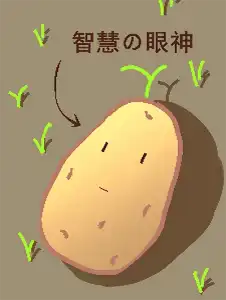Chapter 80: Winter Wheat |
The days after the Harvest, how to sell off the excess foodstuff was also an important matter for the island.
Excluding the 200 morgens of rye from the church, the 2800 morgens of ryefields owned by Marin and his underlings (another 200 morgens was used to plant oatwheat), yielded a total of 8.4 million pounds of rye.
However, there was only a population of 6000 on the island, even if the average yearly consumption per capita was 500 pounds of rye, they would only need 3 million pounds, and there was still an excess of 5.4 million pounds.
Marin thought about it for a moment, he decided to set aside 5 million pounds and sell that. Each pound of rye was worth 1 pfennig, 5 million pounds was worth 5 million pfennigs, after conversion, that was about 83 thousand gold ducats and more.
Originally, Marin intended to sell that to the Wiggin’s Merchant Association. However, Kohler who had experience roaming the country and had broad knowledge told Marin that the price of foodstuffs in Europe was very unbalanced.
Kohler had once heard a Jewish merchant say, the price of foodstuff in Europe was the cheapest in Eastern Europe. Lviv of Poland (now belonging to Ukraine), because the black soil (chernozem) produced large quantities of foodstuff, the price of rye was just 0.5 pfennigs per pound; while in Deutschland it was 1 pfennigs per pound; in the England area, it was 1.5 pfennigs (penny) per pound; France areas were similar to Deutschland; but Spain at the same time had a high price for wheats. Rumor has it, the price of rye around Barcelona reached prices as high as 2 pfennigs per pound, while the price of wheat reached an even higher price of 10 pfennigs per pound.
The Italy area was originally a major producer of crops. But due to war and conflict over the past two years, the prices of food had also soared, and was comparable with Spain…
Which also means, if they ship these rye to Spain, they would gain much more profits. Although that was the plan, but Marin was starting to feel depressed. Because — he did not own a ship for long voyages…
To ship the rye towards Spain, it would take a very far naval route. Not only must they be careful of the Atlantic’s waves, they must also be wary of pirate attacks. This period of time, the seas were not peaceful. Taking the naval route had a high risk of being targeted by pirates. Unless your ship was an armed merchantman.
Due to the circumstances, Marin endured the pain, and decided to sell the wheat to England as usual. England was quite close to Texel, being only several hundred kilometers away. Although Marin did not own a large boat, but he could hire trading vessels of a larger size to ship the wheat to England and sell it.
The prices of food in England was relatively high, the retail price of rye was 1.5 pennies per pound Even their wholesale prices was 1.2 pennies per pound. If this was sold in Deutschland, the most they could get was a wholesale price of 0.8 pfennigs per pound. Transporting them over to England, they would obtain another half of the price.
Of course, due to the trade sanctions of France towards Texel, Marin was forced to ship the foodstuff towards England without using the name of Texel.
As such, Marin specifically sent Kohler to bribe several young, destitute Jewish merchants, so they would represent and establish the “North Sea Merchant Association” in Amsterdam. Then, under the guise of the “North Sea Merchant Association”, they hired sea vessels and shipped the rye for sale towards England.
Although they were levied by the Britons with import tariffs of 6 pennies per pound, but compared to the difference in wheat prices between England and Deutschland, it really was nothing.
Besides, the currency of England was quite strong, and was about the same as the strongest imperial currency distributed by the Holy Roman Empire. Unlike the Princes of Northern Deutschland, which churned out shoddy coins. For example, the imperial pfennigs had a similar silver content as the English pennies, which made up of about half. While pfennigs distributed by places like Trier and Cologne only had a silver content of less than 25%, almost becoming copper coins…
Because England had a unified government, and the coinage belonged to the Royal Family, also that the Royal Family of England was not as shameless as the Royal Family of France, so that’s why the coins that they minted were quite consistent in value.
As such, the economy of England has always been stable. Trading with England was also a good solution.
And regardless if they were Britons or French, nobody had realized that this supposed “North Sea Merchant Association” was actually owned by Marin. That’s why, the trade sanctions set by the French could be considered a missed effort…
It was hard to blame them, Marin had lived through the great economic surge of China in modern times, so towards something like finding loopholes, though he was not proficient at it, he was still leaps and bounds ahead of the people in the Middle Ages. The trade sanctions of the French, with a simple trick of Marin giving the Texel products a ‘disguise’, the French were fooled by it… In this day and age, there weren’t spies in the European countries, as communication and transportation was extremely inconvenient. If Marin did something over here, even if he did it loud and aboveboard, it would still take a long time for France to hear wind about it. Let alone that Marin had carried this out quietly, if the French wanted to get to the bottom of things, who knows how many years it would take them.
After taking care of the remaining rye on the island, Marin was pondering his future arrangements.
Currently, aside from the original 3200 morgens of farmland on the island, Marin had already arranged for the serfs to develop another 3200 morgens of farmland. And this batch of farmland, aside from granting 100 morgens to Schwartz and 50 morgens to Frundsberg. The remaining 3050 morgens was farmland belonged to Marin himself.
In order to develop the farmland, Marin mobilized the serfs to fill and level a large swampland, and after digging up many aqueducts, did he gain this much farmland. In reality, there was much more arable land on the island. However, Marin lacked manpower, as he only had serfs in the thousands. In this day and age, agriculture was purely manpower, and there were no mahcines. That’s why, without sufficient manpower, it doesn’t matter how much land there was.
Meanwhile, Texel itself was only 20 000 morgens large, including the beach and dunes, as well as grassland, being able to develop 6400 morgens of farmland was basically hitting the limit. Because the freshwater on the island was only sufficient to irrigate so much land.
Sea islands were different than inland, inland, as long as there was a river present, there would be an endless source of freshwater, so they could develop the land as much as they wanted, and utilize every inch of land. As for islands, the freshwater system was separated from inland, and it was independent.
Although Texel was not lacking in freshwater, it was still not an endless supply. Being able to irrigate 6400 morgens of farmland was the limit. And it was already impossible to develop more. Otherwise, Marin definitely would have developed more than half of the available land on Texel into farmland.
Based on the habits of Europeans, they were already accustomed to the farrow technique. During the Winter season, Europeans in the Middle Ages normally would not plant any crops. Because they wanted to let the soil ‘rest and recover’.
In reality, this was only because the Europeans did not know how to use fertilizers, which was why they needed to leave the soil to regain its fertility. It was different for the Chinese, in the Southern region of China, they usually plant crops in two season each year.
Aside from the paddy in the Northernmost region which can be planted two to three times per year, the remaining area (mostly the Central Southern part), rotated paddy and wheat. They plant winter wheat during the Autumn, and harvesting wheat during the start of Spring. Then, sow paddy, and harvest that during the Autumn.
Because the Chinese had known how to use manure (nitrogen fertilizer) and plant ash (potash fertilizer), that’s why even if the soil was endlessly used, they still managed to obtain high yields every year.
That’s why, when other people had decided to leave the soil to the grass, Marin decided to plant winter wheat…
Europe in the Middle Ages, the farmers were used to only one planting season every year. Normally they plant in the Spring, and harvest during the Autumn. There were also winter wheat strains, but when Marin heard about the growth period of the winter wheat, he desperately wanted to curse…
Because, the winter wheat in Europe’s Middle Ages was still planted at the end of Autumn, without a doubt, but its growth cycle was really infuriating. Because, the winter wheat in this period of Europe, although also planted in October and November, but the harvest period had to wait until July/August of the next year
…
While Marin clearly remembered that in his previous life, the winter Wheat was clearly harvested during May. After the harvest, they could fertilize the soil with some amount of manure, and there was still sufficient time to plant paddies. Then, during October, the paddies would be ripe for harvest…
However, the terribly infuriating European winter wheat actually needed to grow for two more months compared to modern times, which was the end of Spring and start of Summer, so there wouldn’t be enough time to plant anything else. By the time the winter wheat was harvested, the farmland had to be left alone for a few more months, awaiting the next sowing of winter wheat, resulting in a serious waste of farmland. However, thinking back to why the Europeans were still carrying out large-scale fallows, that amount of wastage wasn’t that odd…
Wheat was different than rye, in Europe, the price of wheat far surpasses that of rye. In Deutschland, the price of one pound of rye was only 1 pfennigs. While for a pound of wheat, it would be as high as 5 pfennigs. The difference in prices was as much as 5 folds. In the future, this difference would only increase, and reach 7 folds.
Wheat was different than rye, rye was much easier to take care of, and they could be treated rougher during sowing, they also did not have a high requirement for water. As for wheat, they were much more delicate than rye, the amount of irrigation they needed also surpasses that of rye.
The Europeans during the Middle Ages were more crude in their farming, normally they would just till the lands with a plow, sprinkle rye seeds, water the fields and go home. Then, they sit and wait, waiting for harvest time…
The farming techniques Marin had promoted for planting rye, “hole seeding”, deep ploughing, weeding and fertilizing, were actually techniques used for delicate wheat. This time, the serfs were more accustomed to the procedure.
As such, when they were planting 500 morgens of winter wheat, it was smooth sailing for them. The only thing was, because they were using native breeds of Europe Middle ages, the next time they harvest the wheat would have to be the upcoming July/August, which was really a scam…
However, considering the expensive price of wheat, even if they wasted one farming season, the price of wheat which was 5 times higher than rye was more than sufficient for Marin to earn way more.
But Marin was unsatisfied with just that, if they had winter wheat with a slightly faster growth cycle, Marin could still be able to plant soybeans after that. In this case, not only would Marin receive a large amount of soybean oil, he would also be able to provide better fodder than oats for the horses. Also, soybeans could fix nitrogen, which would increase the fertility of the soil. Using soil which had previously been planted with soybeans, and planting winter wheat afterwards, the soil would appear much more fertile…
However, even if he wanted to obtain winter wheat strains with slower growth cycles, Europe naturally had none, neither did Marin learn about agricultural technology, so he did not know how to breed excellent wheat strains.
That’s why, he could only consider going to the Ming Dynasty of China in order to purchase winter wheat strains with faster growth cycles, as well as the “versatile” soybeans… That’s why, the great voyage was still a great necessity.
Besides, Marin suddenly remembered that winter wheat required to be fertilized with potash. Potash fertilizers could help winter wheat endure the cold, as well as increasing the yield. In Germany, there was a rich reserve of potassium salt, at one time, Germany was still the greatest exporter of potash fertilizer. Like the Harz Mountainrange, there were several large potassium salt deposits there. Marin was starting to make calculations in his mind, whether or not he should send someone to purchase the mining rights for those potassium salt deposits, to act as his potash fertilizer reserves. After all, relying solely on plant ash as potash fertilizer, the potash content was too low…

















